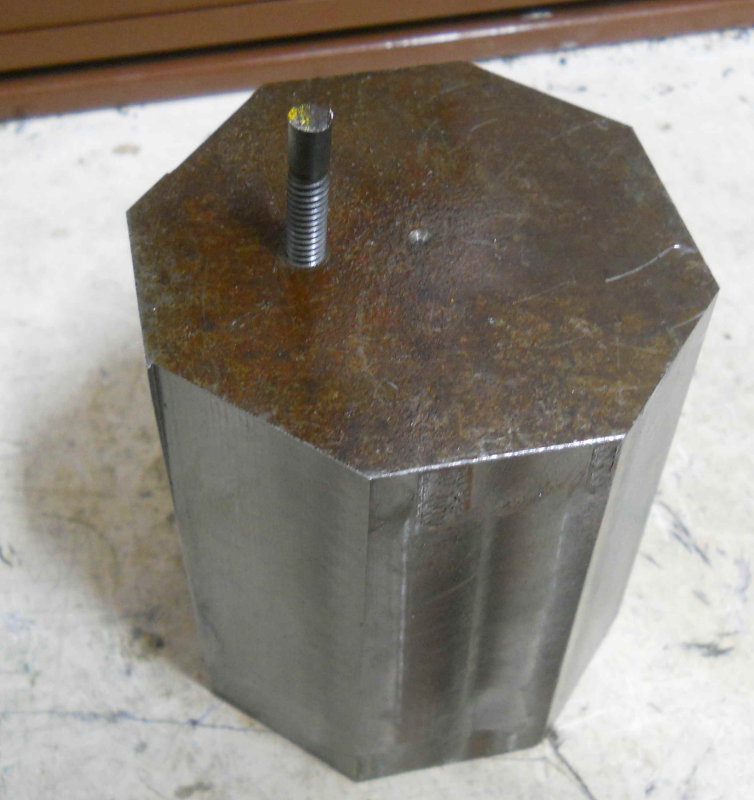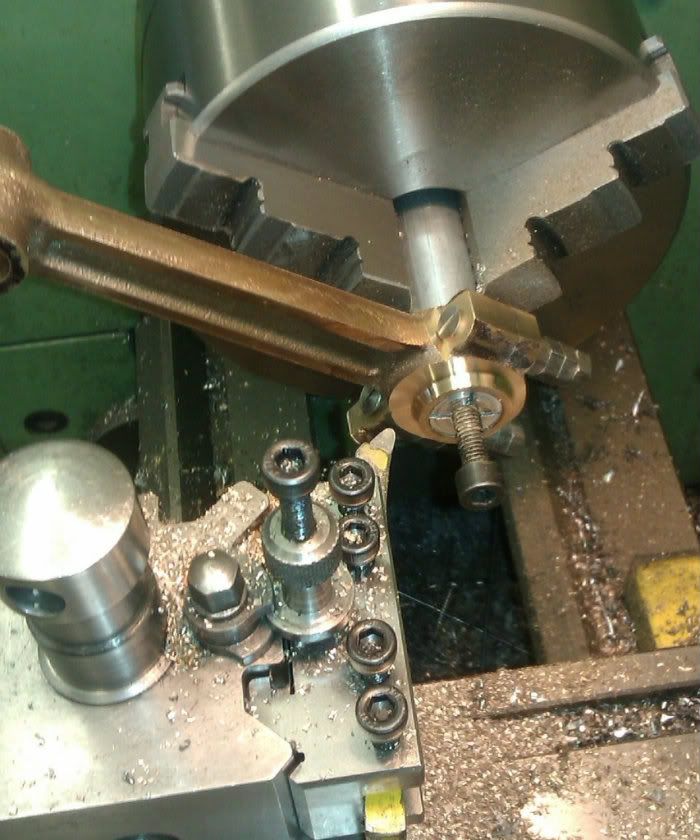- Joined
- May 30, 2011
- Messages
- 135
- Reaction score
- 4
I am planning to return work on my 8 Cylinder Radial Engine. I have been gifted some very nice brass (three times what i need), and hope to use it as cylinders for the engine. I will be using UHMW for the pistons to reduce wear on the brass.
Brass being pricey as it is, I was hoping to make efficient use of it without wasting.
My plan right now would be to cut of a length just over 1.25" from the 1.5" dia bar. Then face both ends to the final length, and drill the 1/2" bore through the center. Then I plan to grab some cheap steel stock (is 1060 cheap? What should I buy from here?), put a 60 degree point (simple dead center) and just suspend the brass between the home made dead center in the chuck, and live center in the tail stock. I would then turn the preferred profile of the cylinder into the brass.
My question is, would it be a problem to have the only driving power be exerted from the dead center? (seeing as brass is soft and easy to cut the friction between the dead center and brass could be suffice)
I had thought of a possible way to make the cylinders if I were to use the 3 jaw chuck to hold the material, and that would be to have a length of brass twice the length for one cylinder, profile the first cylinder, then rotate, and be careful when clamping to line up the flat teeth of the jaws onto the cylinder fins so that they don't gouge, and then turn the other cylinder, and part in between. Worried that if there was a catastrophic problem with the tool got jammed, the cylinder set could get twisted, and the chuck would mangle the first cylinder.
Pictures soon to describe better.
Ian


Brass being pricey as it is, I was hoping to make efficient use of it without wasting.
My plan right now would be to cut of a length just over 1.25" from the 1.5" dia bar. Then face both ends to the final length, and drill the 1/2" bore through the center. Then I plan to grab some cheap steel stock (is 1060 cheap? What should I buy from here?), put a 60 degree point (simple dead center) and just suspend the brass between the home made dead center in the chuck, and live center in the tail stock. I would then turn the preferred profile of the cylinder into the brass.
My question is, would it be a problem to have the only driving power be exerted from the dead center? (seeing as brass is soft and easy to cut the friction between the dead center and brass could be suffice)
I had thought of a possible way to make the cylinders if I were to use the 3 jaw chuck to hold the material, and that would be to have a length of brass twice the length for one cylinder, profile the first cylinder, then rotate, and be careful when clamping to line up the flat teeth of the jaws onto the cylinder fins so that they don't gouge, and then turn the other cylinder, and part in between. Worried that if there was a catastrophic problem with the tool got jammed, the cylinder set could get twisted, and the chuck would mangle the first cylinder.
Pictures soon to describe better.
Ian


Last edited:






